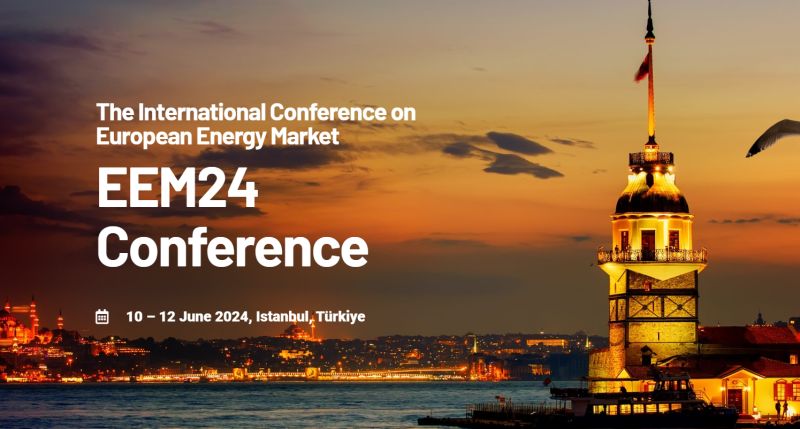Presentation of Two Papers at EEM2024
We are pleased to announce that the the PowerDig team presented two papers at the International Conference on European Energy Market 2024 (EEM2024), held from June 10-12 in Istanbul, Turkey.

The title of the first paper is “TSO-DSO Coordination under Wind and Solar Power Uncertainty: A Two-Stage Stochastic Programming Approach”. The paper explores the critical need to harvest the potential of Distributed Energy Resources (DERs) in providing flexibility for power systems due to the integration of renewable energy sources. This paper proposes a two-stage stochastic optimization framework to improve coordination between Transmission System Operators (TSOs) and Distribution System Operators (DSOs), considering the uncertainty of wind and solar power. The first stage of the framework determines unit commitment and operation levels for conventional generation units, while the second stage adjusts to the actual levels of renewable generation. This adjustment relies on the flexibility of conventional power generation, centralized storage, decentralized storage, distributed generation, and demand response to manage variability effectively. The analysis reveals that coordinated operations can significantly reduce system costs and enhance the ability to handle renewable energy variability. The conclusion emphasizes that TSO-DSO coordination results in operational cost savings, particularly with increased DER capacity and a higher share of renewable energy sources. The study suggests that prioritizing a high DER share through a weighted sum approach is the most cost-effective strategy and assesses the Value of Stochastic Solution (VSS) in terms of renewable power uncertainty, noting that expanding scenarios beyond nine provides minimal benefits relative to computational demands.
The second paper, “Congestion Management Based on Power-to-Gas: Opportunities and Challenges in European Electricity Markets,” investigates the techno-economic potential of Power-to-Gas (PtG) technology for managing grid congestion in the context of increasing renewable energy integration. As the grid faces challenges in accommodating fluctuating renewable energy inflows, PtG offers a promising solution by converting surplus electricity into synthetic natural gas, thereby utilizing existing gas infrastructure for energy storage and enhancing grid flexibility. Through a comprehensive literature review and a two-stage model analysis, the paper evaluates PtG’s effectiveness in reducing grid congestion, optimizing energy dispatch, and supporting a transition towards a sustainable and resilient energy system. The findings highlight PtG’s capacity to decrease redispatch volumes by 3.4% and associated costs by 1.7%, while facilitating a higher penetration of renewable sources into the energy mix. The conclusion underscores PtG’s role in alleviating grid congestion by converting excess renewable electricity into synthetic natural gas and using existing gas infrastructure for storage, thereby enhancing grid flexibility and reducing the need for conventional grid expansion. The study also points out the necessity for future research to address operational constraints and regulatory frameworks for the successful implementation of PtG technology.
Both papers contribute significantly to the ongoing discourse on energy system flexibility, offering insights into innovative solutions to manage the variability and integration challenges associated with renewable energy. We are excited to share these advancements with the broader energy research community and to continue our efforts towards transforming energy systems through cutting-edge research and technology solutions.
Papers’ links:
TSO-DSO Coordination under Wind and Solar Power Uncertainty: A Two-Stage Stochastic Programming Approach
Congestion Management Based on Power-to-Gas: Opportunities and Challenges in European Electricity Markets
